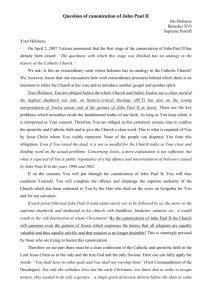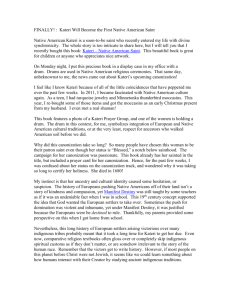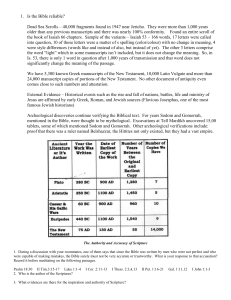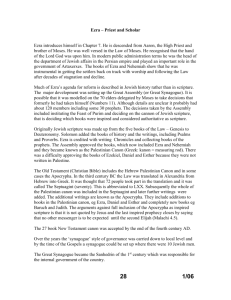Canonization
advertisement
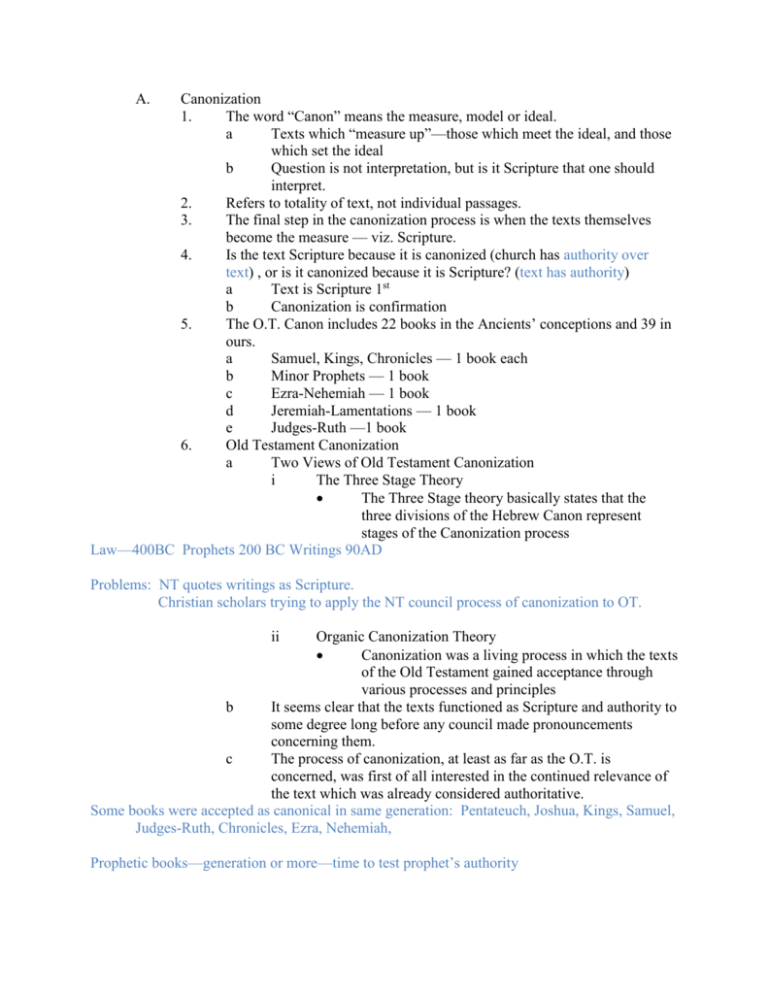
A. Canonization 1. The word “Canon” means the measure, model or ideal. a Texts which “measure up”—those which meet the ideal, and those which set the ideal b Question is not interpretation, but is it Scripture that one should interpret. 2. Refers to totality of text, not individual passages. 3. The final step in the canonization process is when the texts themselves become the measure — viz. Scripture. 4. Is the text Scripture because it is canonized (church has authority over text) , or is it canonized because it is Scripture? (text has authority) a Text is Scripture 1st b Canonization is confirmation 5. The O.T. Canon includes 22 books in the Ancients’ conceptions and 39 in ours. a Samuel, Kings, Chronicles — 1 book each b Minor Prophets — 1 book c Ezra-Nehemiah — 1 book d Jeremiah-Lamentations — 1 book e Judges-Ruth —1 book 6. Old Testament Canonization a Two Views of Old Testament Canonization i The Three Stage Theory The Three Stage theory basically states that the three divisions of the Hebrew Canon represent stages of the Canonization process Law—400BC Prophets 200 BC Writings 90AD Problems: NT quotes writings as Scripture. Christian scholars trying to apply the NT council process of canonization to OT. ii Organic Canonization Theory Canonization was a living process in which the texts of the Old Testament gained acceptance through various processes and principles b It seems clear that the texts functioned as Scripture and authority to some degree long before any council made pronouncements concerning them. c The process of canonization, at least as far as the O.T. is concerned, was first of all interested in the continued relevance of the text which was already considered authoritative. Some books were accepted as canonical in same generation: Pentateuch, Joshua, Kings, Samuel, Judges-Ruth, Chronicles, Ezra, Nehemiah, Prophetic books—generation or more—time to test prophet’s authority Last group—composition of book is a process—constantly added to over time (Psalms, Proverbs, etc. <Pierce believes Job as well>) Books debated a long time—Esther, Song of Songs (124 AD rabbi declared it most holy book written. This closed the debate), Ecclesiastes, Daniel Jasher—seems to have been scripture but then lost authority. We DO NOT have book of Jasher. False claims of 2 current books. 7. New Testament Canonization a Process was very different for the N.T. i Heretics very early.—had to address heresy (Marcion 140 AD) ii Greek influence vs. Hebrew utilitarian concept of scripture iii Institutionalized Church iv Still a Pre-canonical Canon –authoritative works even before official canonization b First Canon was by a heretic Marcion (A.D. 140) i Anti-Semitic ii Forced Church to Respond c Church Struggled to set limits (A.D. 170-367)—from within 50 years of all writing, we see canonization discussed. Ie. Clement declares gospel of Judas non-canonical. i Biblical Texts that were Questioned (only ones ever questioned out of the 27) Hebrews—who wrote it, James—does it match Paul—even Luther re-visits 1 & 2 Peter—they are so different from one another so what is relationship w/ Peter?, 2 & 3 John—written by John-too personal, Jude—extrabiblical texts, Revelation—apocalyptic literature ii Other works considered (never seriously considered) 1 Clement—90AD, very early, apostolic authorship. Problem is he uses Phoenix as illustration which seemed to legitimize it as truth The Epistle of Barnabas—noted that there is no way it was written by Barnabus The Shepherd of Hermas—focus was more on adultery and very little Christology The Didache—very early collection of teachings. Had no apostolic authority. Not consistent w/ nature of other NT books. Too creedal. 8. Revelation of Peter—determined very early did not originate w/ Peter Gospel of Thomas—two gospels of Thomas Gospel of Judas—both originated in second century—no apostolic authority. 2nd—they were Gnostic and were never accepted in church ever. iii Old Testament Books were only discussed in relation to the Alexandrian or Palestinian Canon (masoretic text). Alexandrian additions were not utilized by N.T. writers (modern apocrypha) Why were they excluded? Inconsistent doctrinally w/ received text, NT never quotes them, they were never widely accepted by the leadership of the early church. Up until Reformation the apocrypha was not considered authoritative—only devotional. Reformation caused Catholic church to canonize them. d New Testament Criteria i Apostolic Origin ii Reception by early Churches iii Consistency with undisputed core. iv Christologically centered Canonization Conclusions a Received Canon versus used Canon b Some people still operate under assumption that Canon is debatable i Search for Historical Jesus ii Some question authorship in order to remove from Canon. c The Canon is Closed — No new revelations

